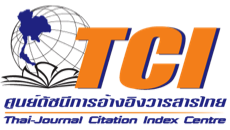การพัฒนากิจกรรมศิลปะ ตามแนวคิด STEAM ร่วมกับการใช้แหล่งเรียนรู้ ในท้องถิ่น เพื่อส่งเสริมผลงานสร้างสรรค์ ของนักเรียนชั้นประถมศึกษาปีที่ 3 (The Development of Art Activities based on STEAM with the Local Learning Resources to Promote The Creative Works of Third Grade Students)
คำสำคัญ:
แนวคิด STEAM, แหล่งเรียนรู้ ในท้องถิ่น, ผลงานศิลปะสร้างสรรค์บทคัดย่อ
งานวิจัยครั้งนี้มีจุดประสงค์ 1) เพื่อพัฒนากิจกรรมศิลปะตามแนวคิด STEAM ร่วมกับการใช้แหล่งเรียนรู้ในท้องถิ่น เพื่อส่งเสริมผลงานสร้างสรรค์ 2) เพื่อศึกษาผลสัมฤทธิ์ทางการเรียนวิชาศิลปะด้วยกิจกรรมศิลปะร่วมกับแหล่งเรียนรู้ในท้องถิ่น เพื่อส่งเสริมผลงานสร้างสรรค์ 3) เพื่อประเมินผลงานศิลปะสร้างสรรค์ของผู้เรียนด้วยกิจกรรมศิลปะ 4) เพื่อศึกษาความพึงพอใจของผู้เรียนต่อกิจกรรมศิลปะ กลุ่มตัวอย่างคือ นักเรียนระดับชั้นประถมศึกษาปีที่ 3 จำนวน 74 คน ภาคเรียนที่ 2 ปีการศึกษา 2562 เครื่องมือที่ใช้ในการวิจัย ประกอบด้วย 1) แบบสัมภาษณ์แบบมีโครงสร้าง 2) กิจกรรมศิลปะตามแนวคิด STEAM ร่วมกับการใช้แหล่งเรียนรู้ในท้องถิ่น 3) แบบประเมินผลงานศิลปะสร้างสรรค์จากผลงานศิลปะของนักเรียนที่เรียนรู้ด้วยกิจกรรมศิลปะ 4) แบบประเมินความพึงพอใจ ที่มีต่อกิจกรรม ผลการวิจัยพบว่า 1) กิจกรรมศิลปะประสิทธิภาพ เป็นไปตามเกณฑ์มาตรฐาน 80/80 2) ผลสัมฤทธิ์ทางการเรียนวิชาศิลปะของผู้เรียนเมื่อเรียนวิชาศิลปะด้วยกิจกรรมศิลปะตามแนวคิด STEAM ร่วมกับการใช้แหล่งเรียนรู้ในท้องถิ่นของนักเรียน ผ่านเกณฑ์ร้อยละ 70 3) ผลงานศิลปะสร้างสรรค์ของผู้เรียนด้วยกิจกรรมศิลปะตามแนวคิด STEAM ร่วมกับการใช้แหล่งเรียนรู้ในท้องถิ่น ของนักเรียนชั้นประถมศึกษาปีที่ 3 กิจกรรมรอบรั้วองค์พระปฐมเจดีย์อยู่ระดับดี กิจกรรมวัสดุท้องถิ่น ประดิษฐ์เป็นจักสานอยู่ระดับดีมาก และกิจกรรมศิลปะจากแรงบันดาลใจในท้องถิ่นอยู่ระดับดีมาก 4) ผลการศึกษาความพึงพอใจของผู้เรียนต่อกิจกรรมศิลปะอยู่ในระดับมาก
เอกสารอ้างอิง
Besa, N. (2015). Effects of STEM Education Approach on Biology Achievement, Problem Solving Ability and Instructional Satisfaction of Grade 11 Students. Master of Education in Teaching Science and Mathematics Prince of Songkla University. (in Thai)
Boonthanom, C. (2016). Integrated STEAM Education to Learning Experience Provision by Using Literature Based for Development of Creative Thinking of Preschool Children. Nakhon Pathom : Kasetsart University. (in Thai)
Bureau of Academic Affairs and Educational Standards. (2008). Development guidelines Measurement and Evaluation Desirable characteristics according to the core curriculum of basic education. [Online]. Retrieved November 15, 2018, from http://www.edu.ru.ac.th/images/edu_files/curriculum51_assess.pdf (in Thai)
Channarong, N. (2016). Culture supports Tourism. Journal of Humanities Ramkhamhaeng University. 35(2): 170 - 184. (in Thai)
Chitrakorn, A. Arts-Based Learning to Enhance Creativity of Learners in 21st Century. Silpakorn Educational Journal. 14(1): 60 - 72. (in Thai)
Dechakup, P. (2014). The Twenty-First Century Teaching Management . Bangkok: Chulalongkorn University Printing House. (in Thai)
Guilford, J.P. (1967). The Nature of Human Intelligence. New York: McGraw-Hill.
Jampong, M. (2017). Development of training package for work creation through steam education approach on energy around us. EAU HERITAGE JOURNAL. 7(3): 81 – 92. (in Thai)
Jedede, O. (1995). Collateral learning and the eco-cultural paradigm in science and mathematics education in Africa. New York: Mc Graw-Hill.
Khetkan, T. (2016). Techniques for teaching creative arts with emphasis on learners. Bangkok: Tharnaksorn. (in Thai)
Kullapisal, P. (1993). Your brain can develop with art. Bangkok: Publishing Plan. (in Thai)
Ministry of Education. (2008). The Basic Education Core Curriculum B.E. 2551 (A.D. 2008). Bangkok: Kurusapa Printing Ladphrao. (in Thai)
Office of Policy and Strategy. 20-year strategic framework for culture in accordance with the 20-year national strategic direction framework. Bangkok: Office of the Permanent Secretary. (in Thai)
Office of the Education Council. (2016). Thai Educational Conditions 2014/2015, how to reform Thai education to catch up with the world in the 21st century?. [Online]. RetrievedNovember15, 2018, from https://www.moe.go.th/moe/upload/news20/FileUpload/45160-7020.pdf
Office of the National Economics and Social Development Council. (2016). The 12th National Economic and Social Development Plan. Bangkok: Office of the Prime Minister. (in Thai)
Po Ngern, W. Course teaching materials 471 205 Art for children. Nakhon Pathom : SilpakornUniversity. (in Thai)
Punmanee, A. (2003). Creative Psychology of Teaching and Learning. Bangkok: Yaimaibooks. (in Thai)
Punyalikit, P. (2017). STEAM Education Activity "Amazing Body Hidden in Insects" Lessons from South Korea To the context of Thai learning. IPST MAGAZINE. 45(207): 6 – 11. (in Thai)
Rodkumnerd, L. The Effects of Project Approach Experience Provision Based on STEAM Education Approach with Using Learning Local Resources in Samut Songkhram on Preschool Children’s Understanding Concepts of Science. Kasetsart Educational Review. 31(1): 93 - 100. (in Thai)
Siripattrachi, P. (2013). STEM Education and 21st Century Skills Development. The Executive Journal. 33(2): 49-56. (in Thai)
Sithajan, B. (2018). Guideline for Art Instruction based on STEAM Education Enhancing Creative Process for The Fifth Graders. Silpakorn E – Veridian Journal. 11(2): 763-780. (in Thai)
Soongyai, T. 2005. The Development of the Creative Thinking of the Preschool Children, STEMAL using the Format experience. Bangkok: Srinakharinwirot University. (in Thai)
Thitajaree, K. (2000). Art activity for teacher. Bangkok: Office of Academic Resources Chulalongkorn University. (in Thai)
Toyoshima, K., Fukui, H., and Kuda, K. (2011). Piano playing reduces stress more than other creative art activities. International Journal of Music Education. 29(3): 257 – 263.





